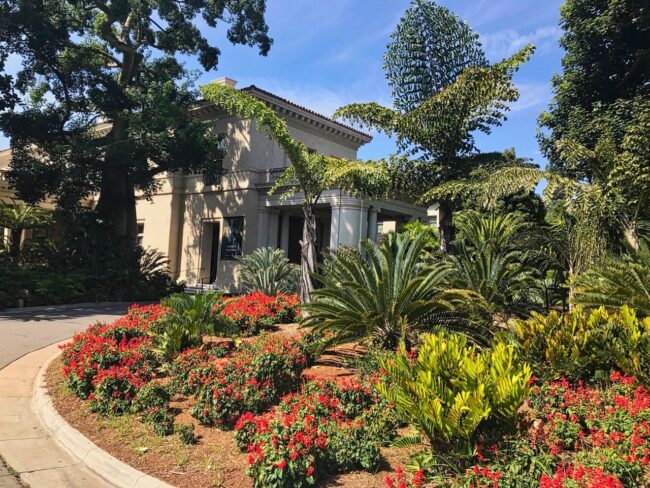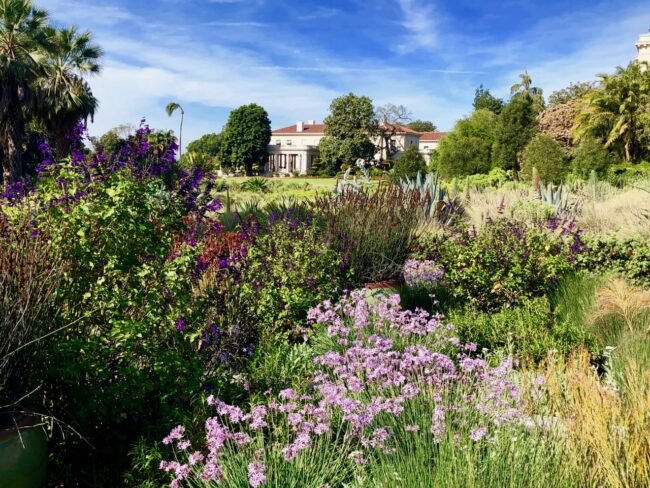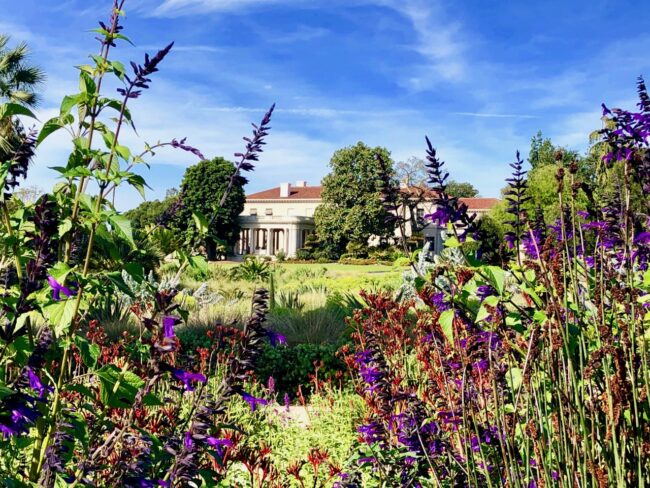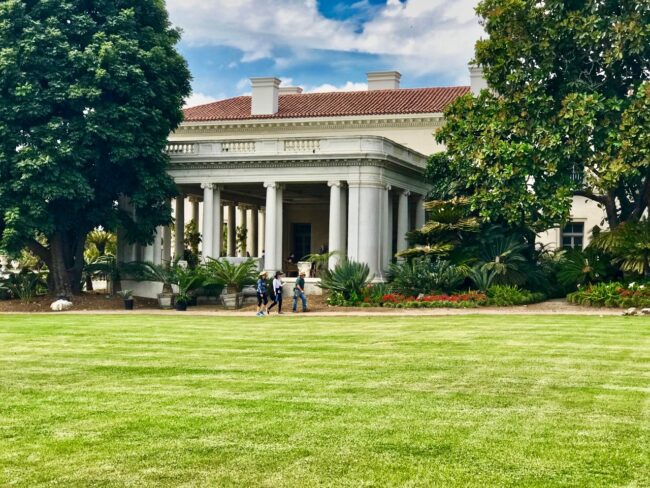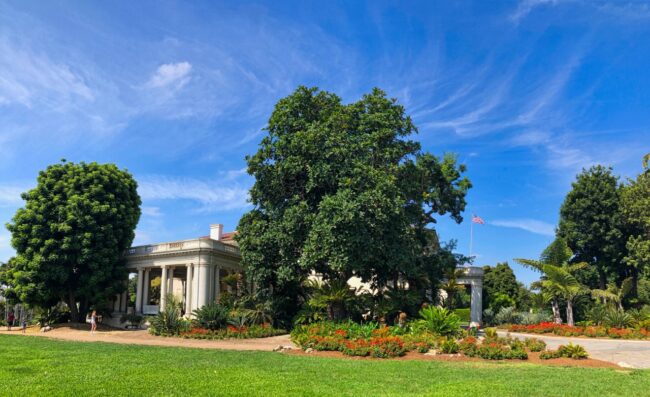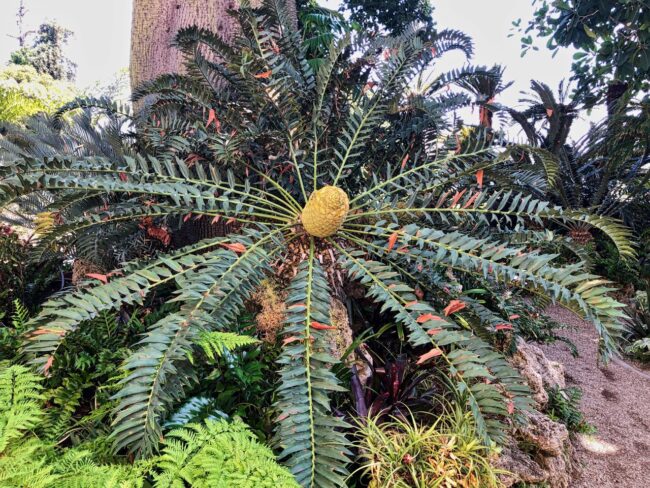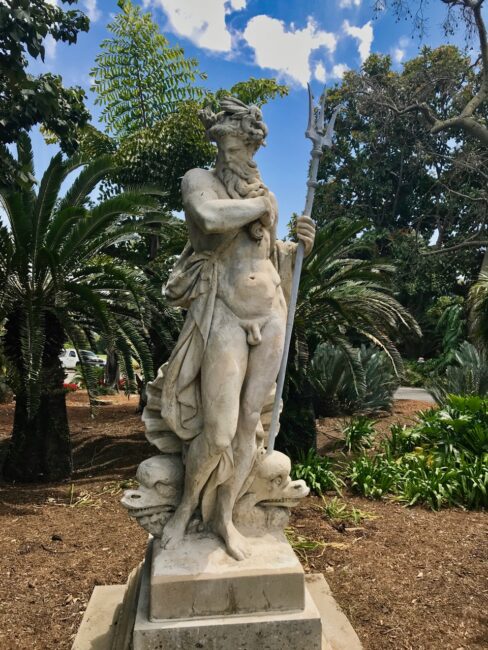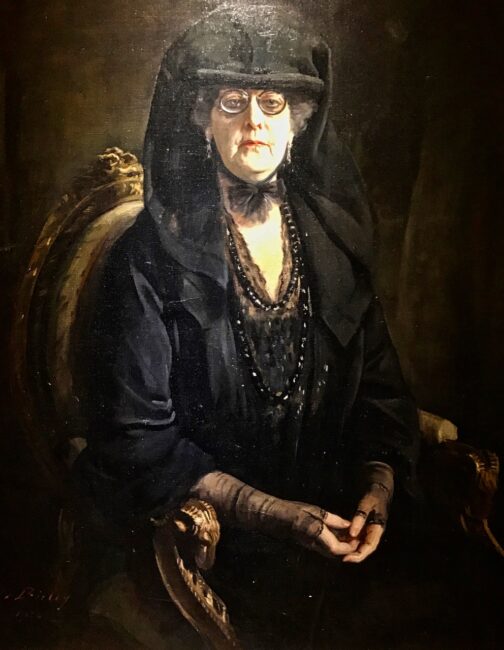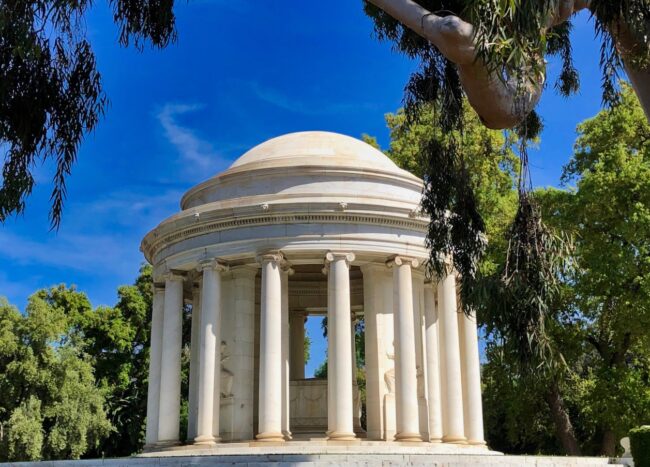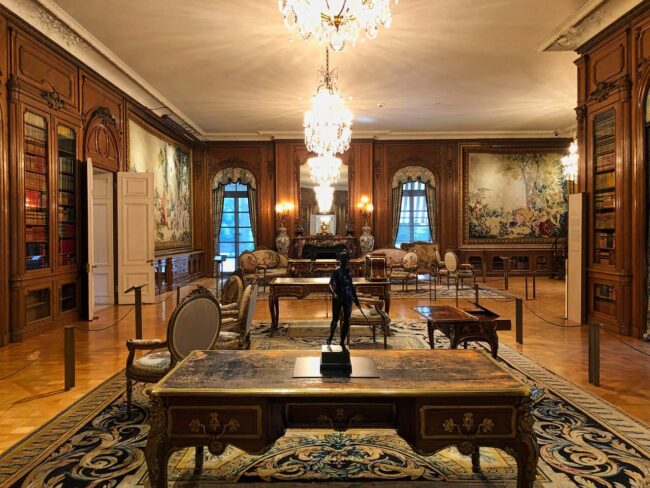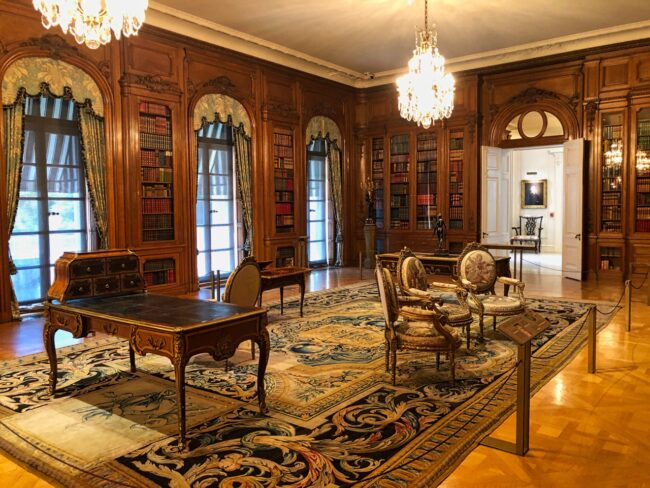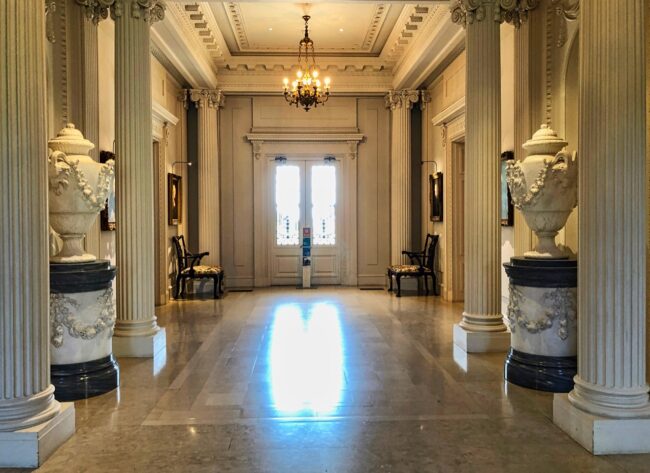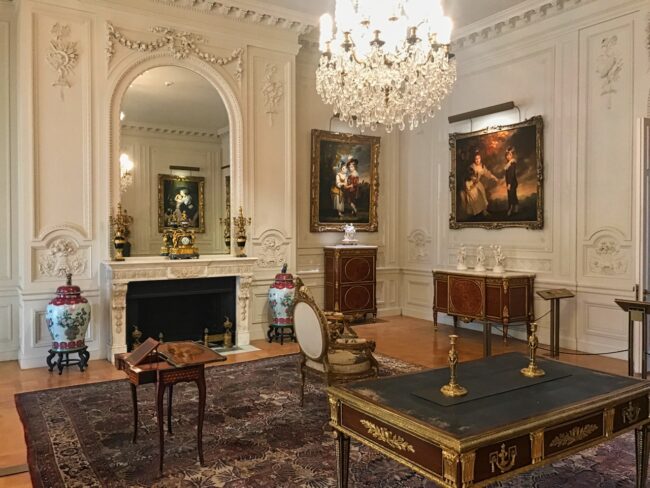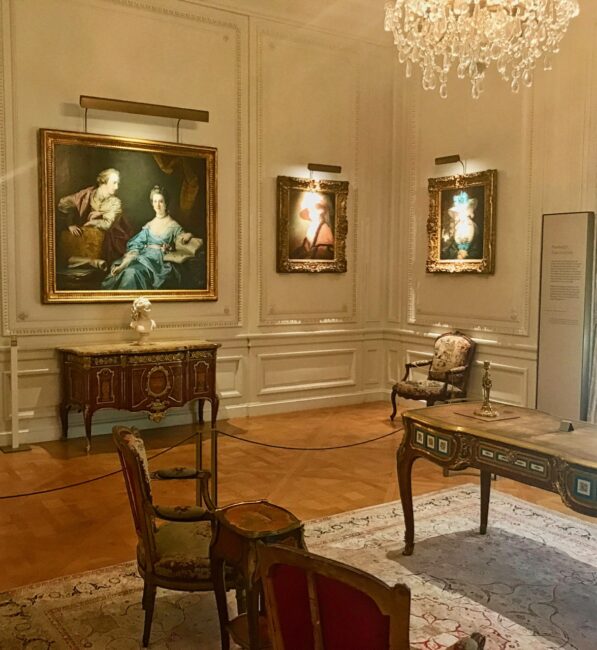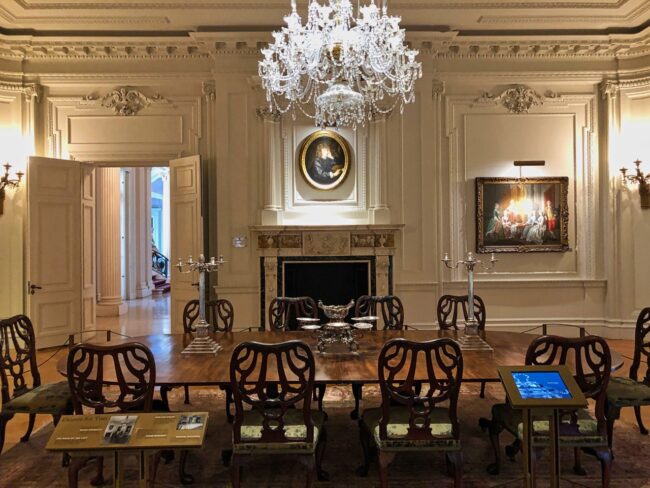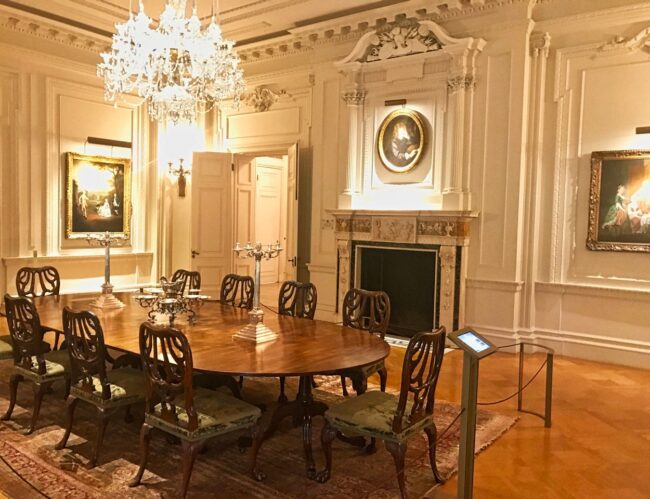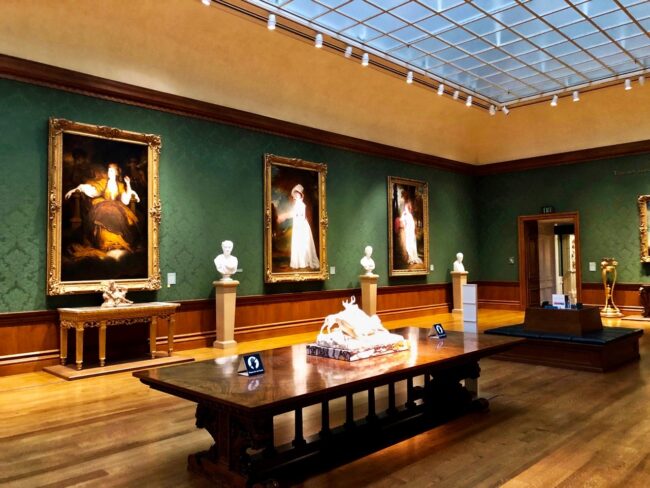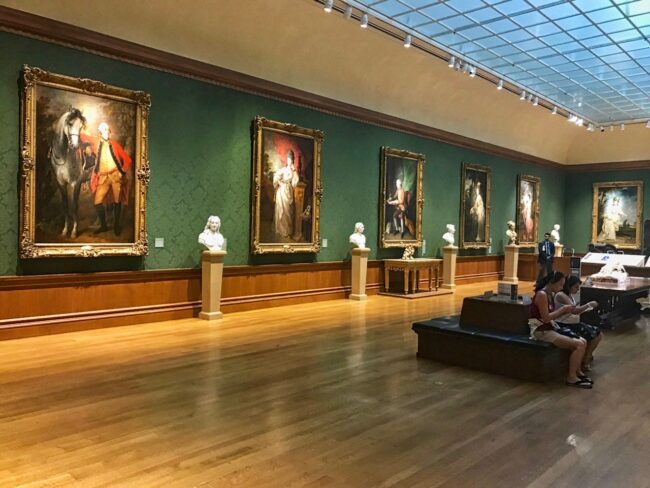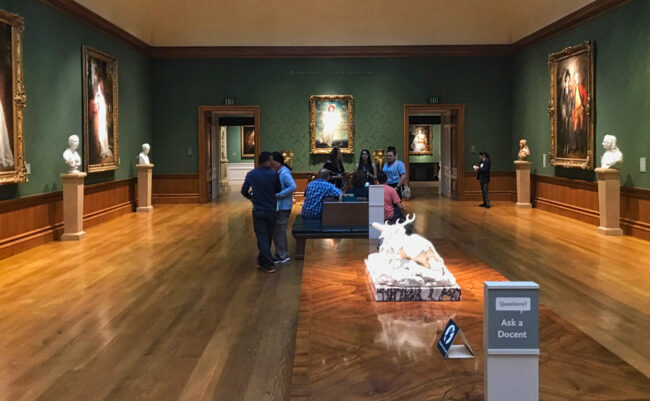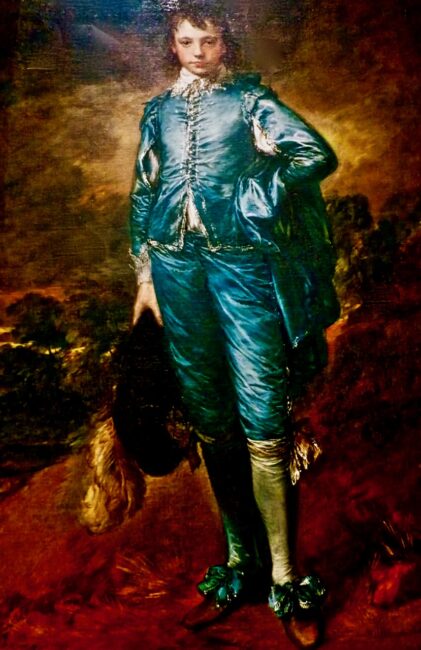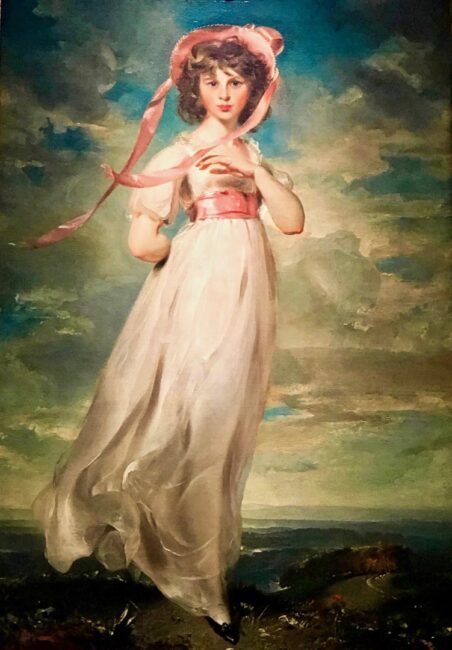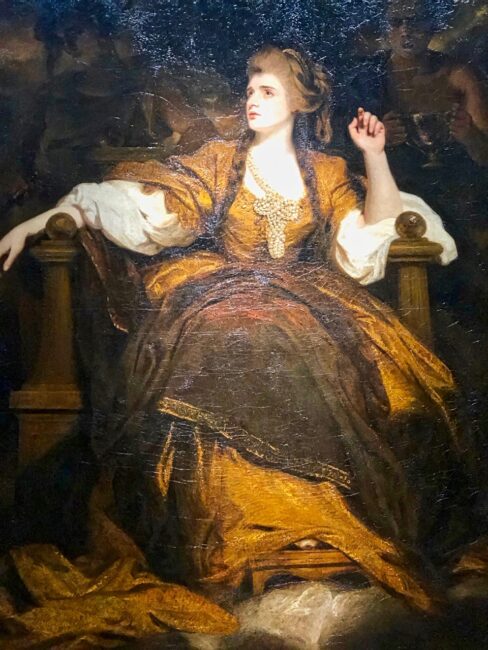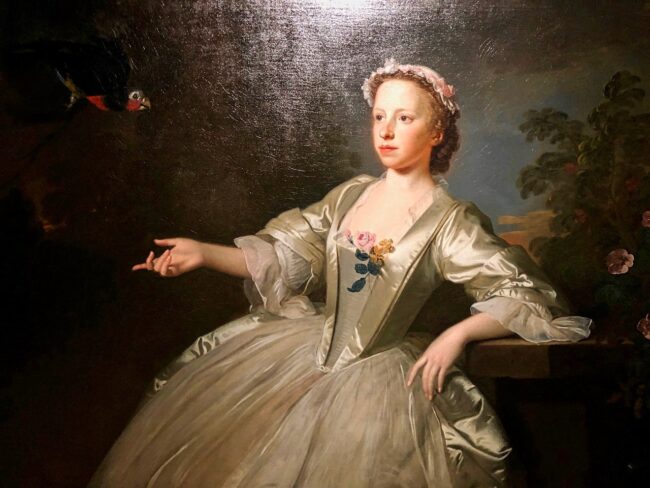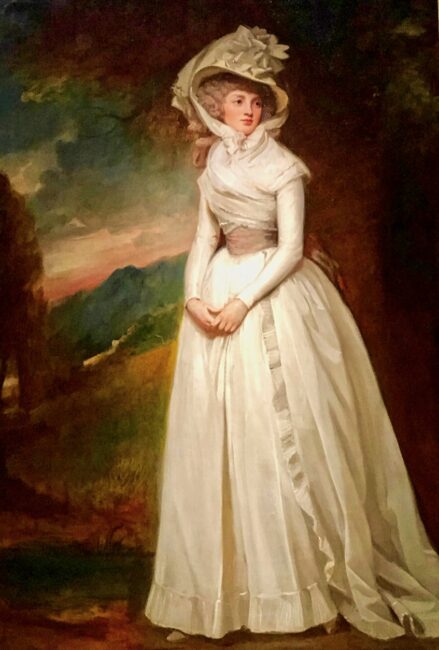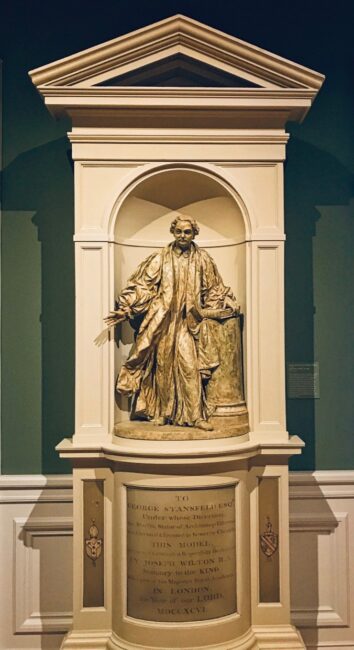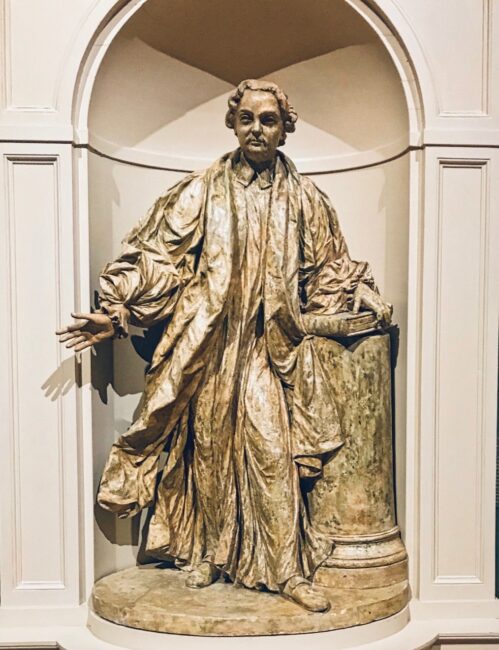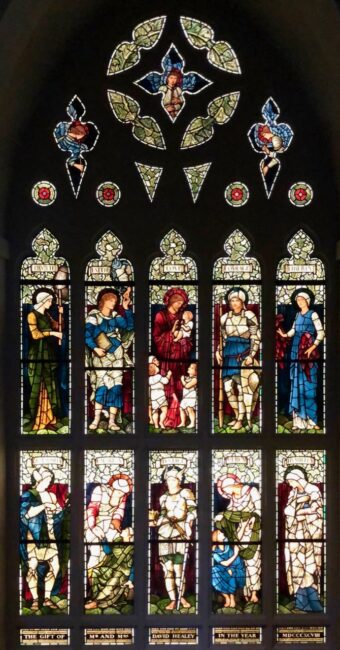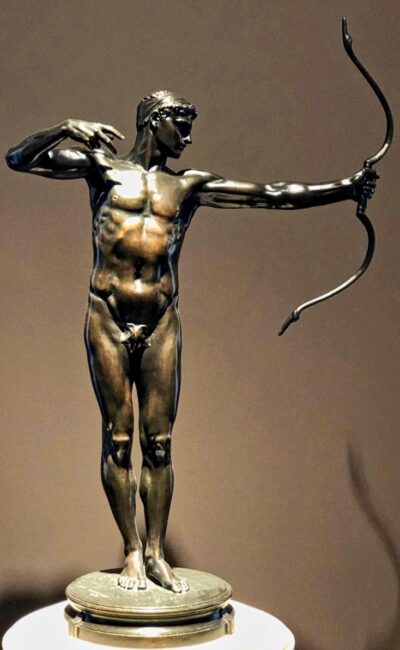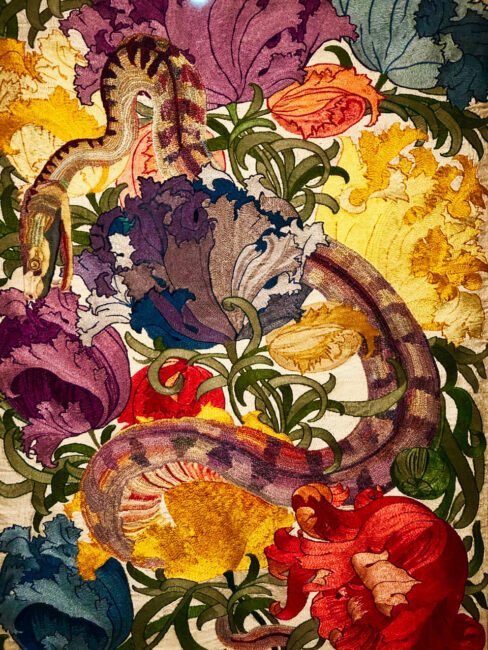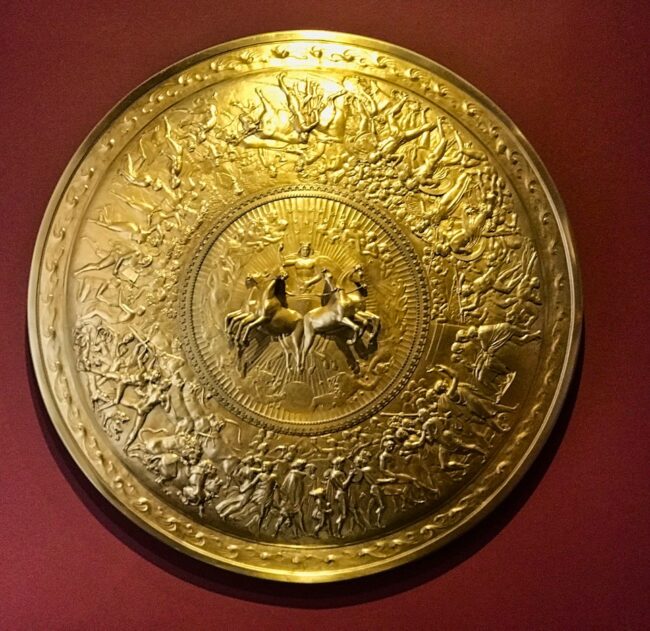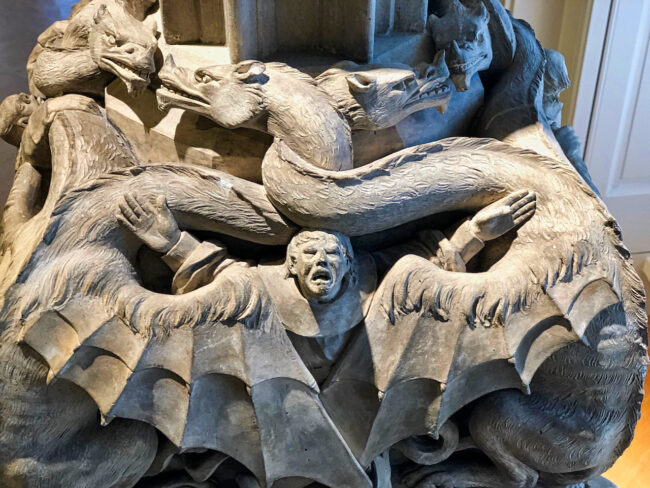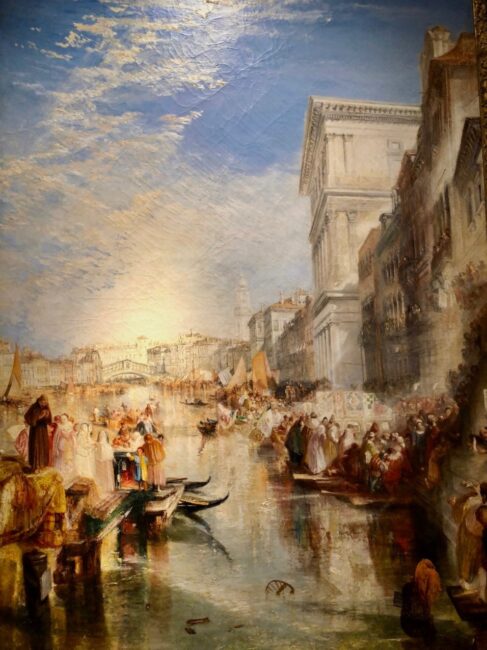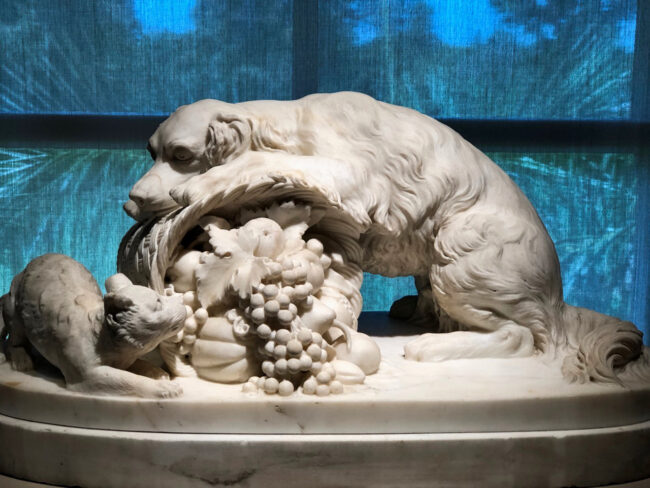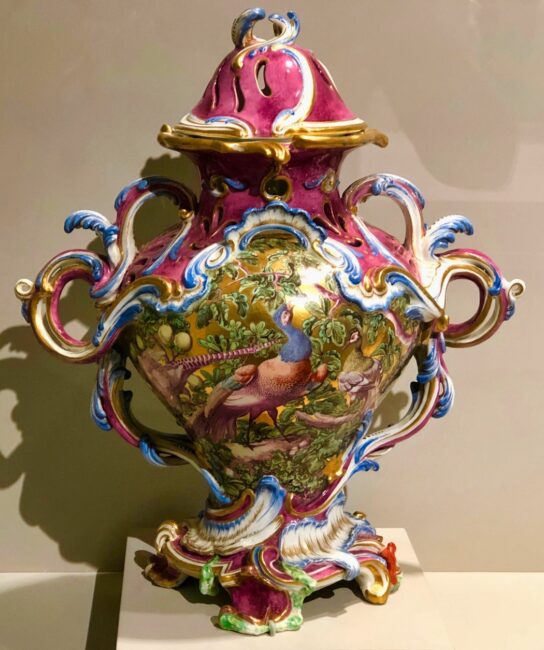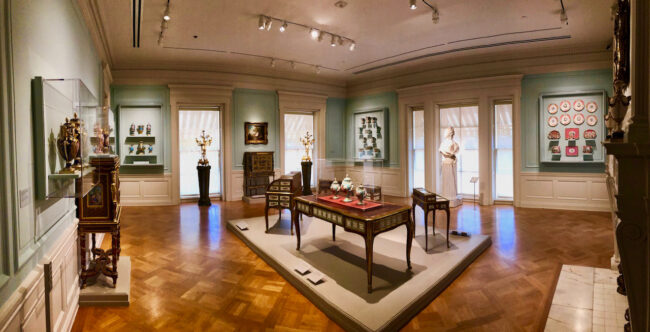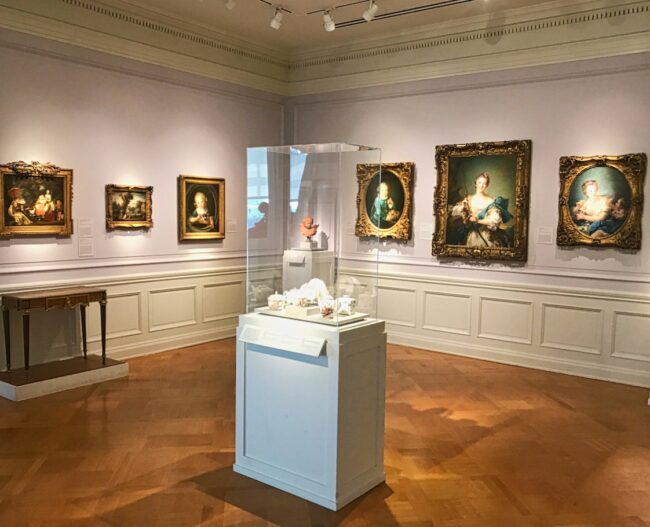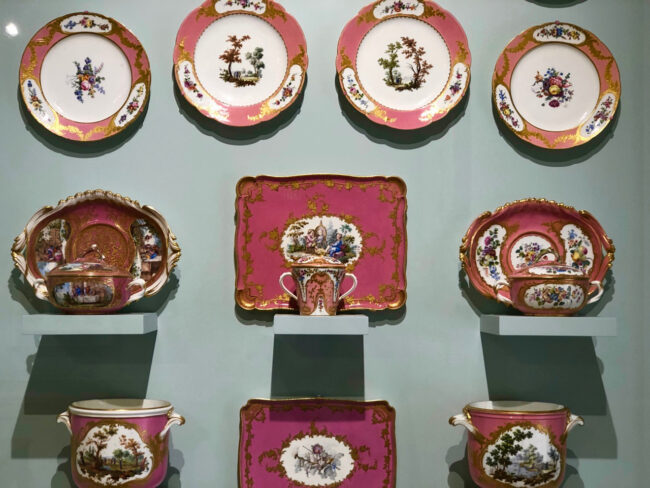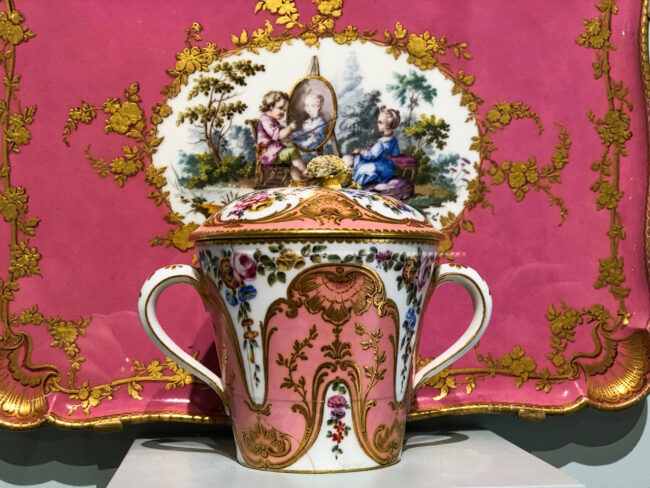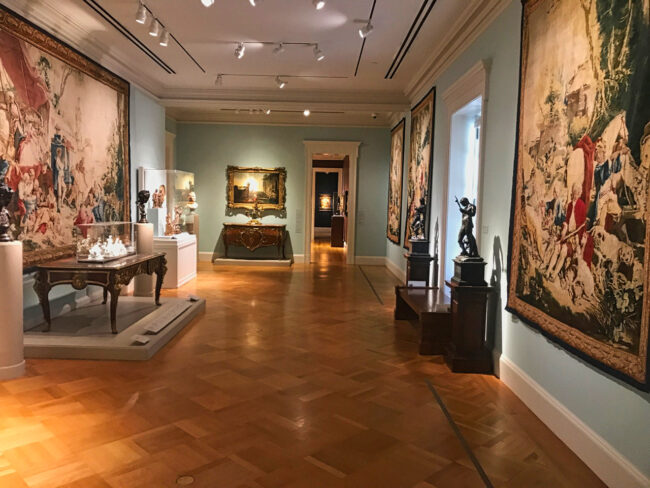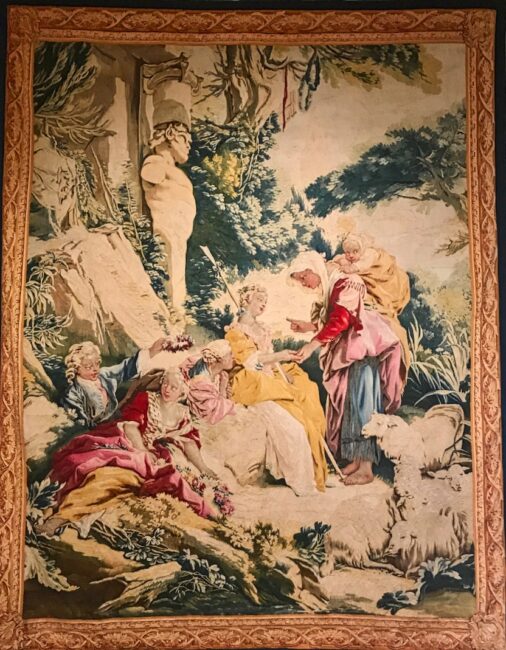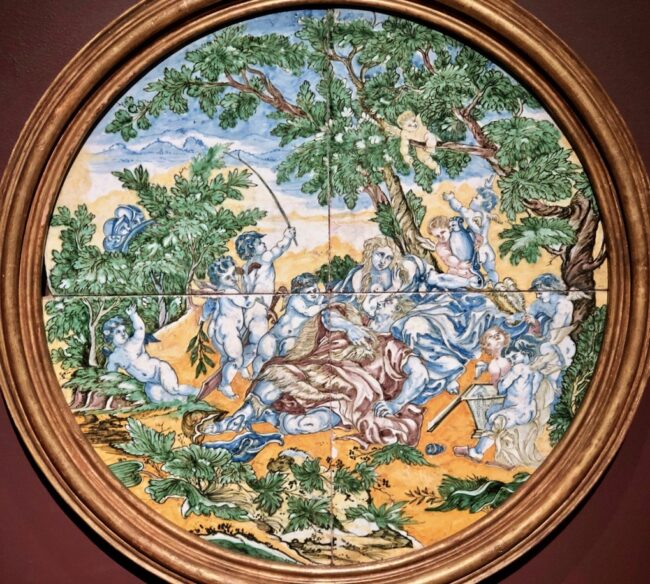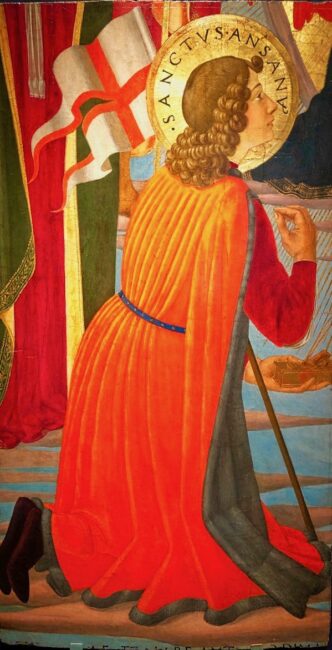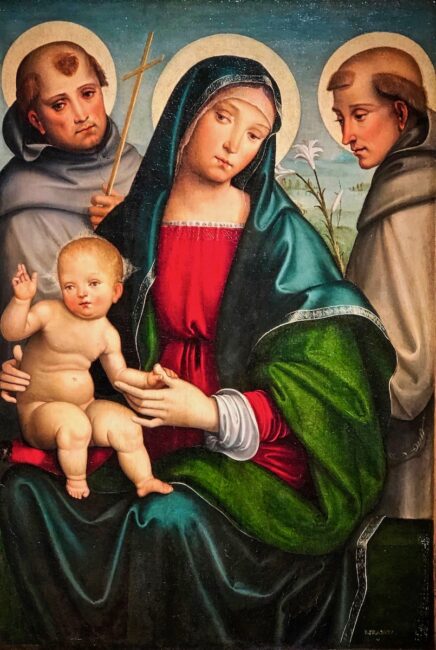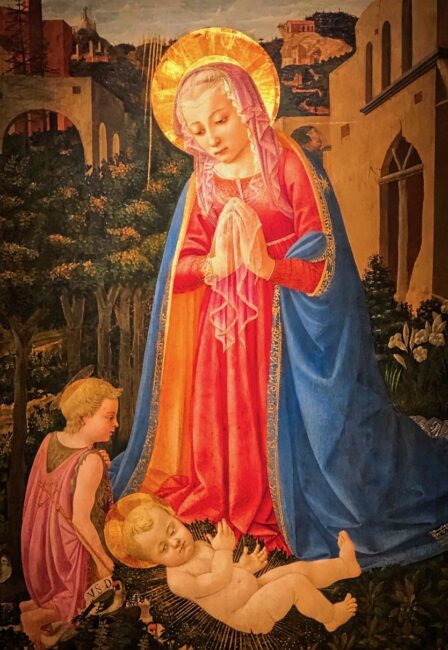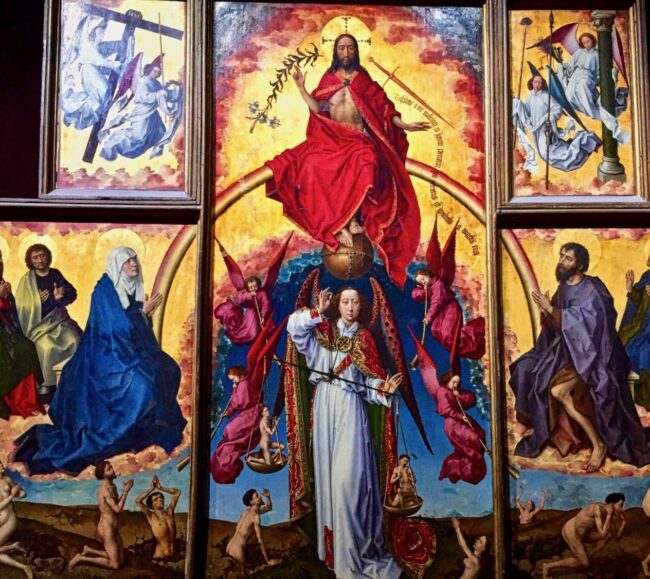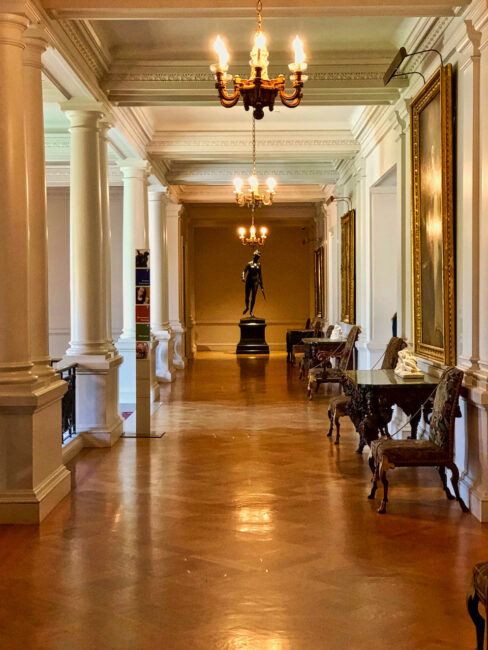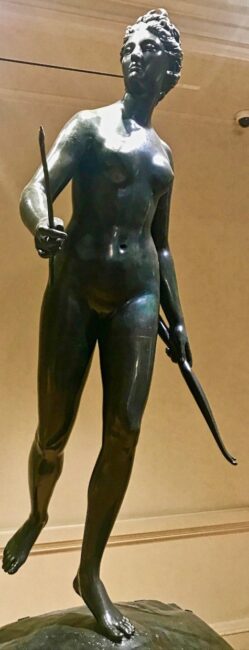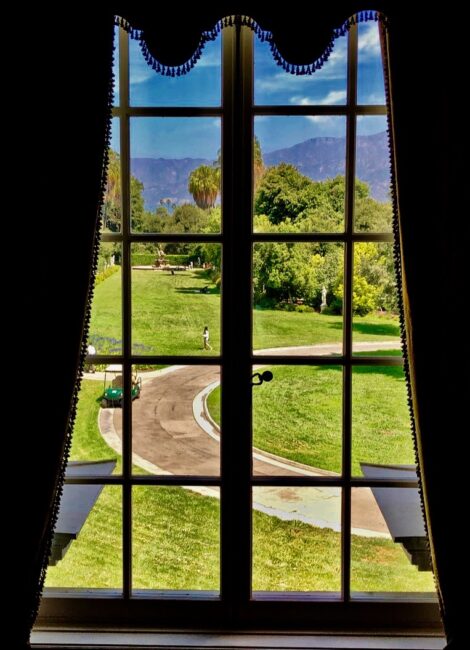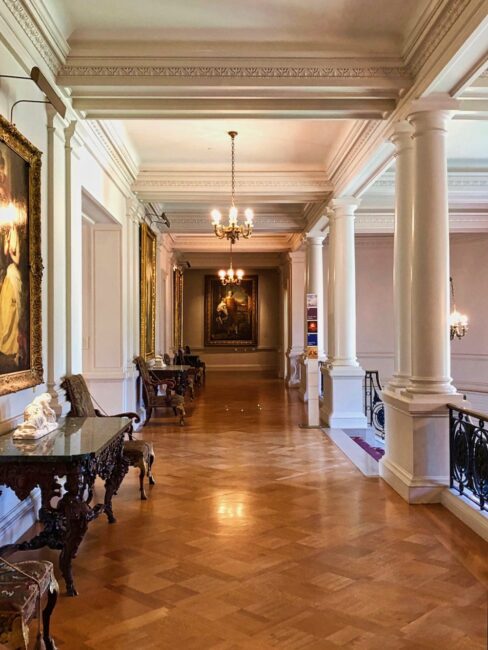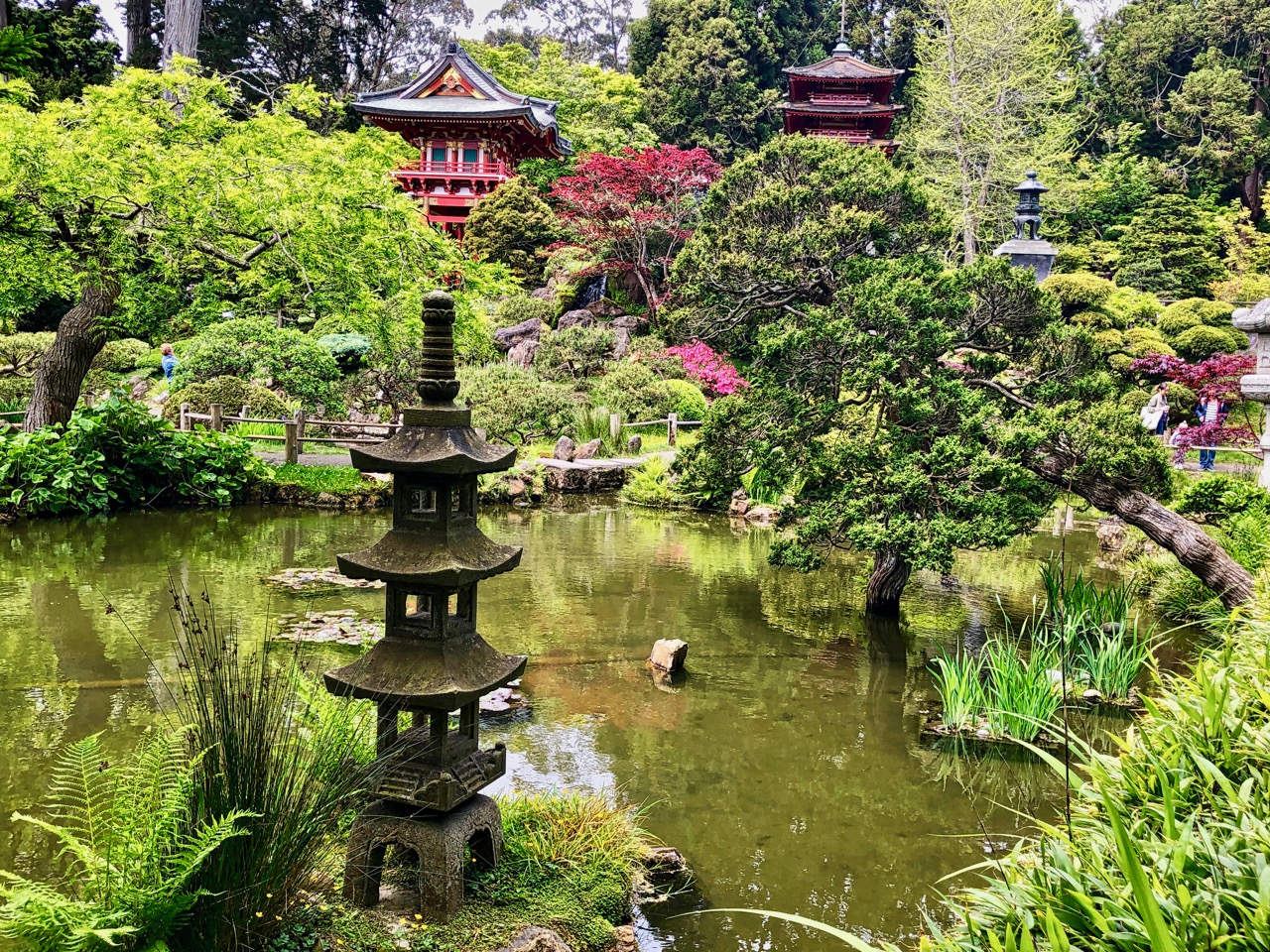
Golden Gate Park – San Francisco
June 19, 2019
Los Angeles County Arboretum & Botanic Garden – Arcadia
May 26, 2020Home Sweet Art Gallery
Huntington Library, Art Collections, and Botanical Gardens (European Art Edition) – San Marino
Last Visit: August 2019
Since we have already taken an extensive tour of the Botanical Gardens (in a previous post), on this excursion to the Huntington Library, Art Collections and Botanical Gardens we’ll take a look at The Huntington Art Gallery: European Art, which is also the villa belonging to Henry and Arabella Huntington.
Noted architects Myron Hunt and Elmer Grey designed the mansion, and when it was completed many considered it “one of the finest in Southern California.” Originally it was not going to be so large, but Arabella (who Henry Huntington would marry in 1913) envisioned something on a larger level. The “modest residence” eventually turned into a 55,000 square-foot home, and due to Arabella’s love of French Beaux-Arts architecture, it was designed in that style.
As you walk past the Huntington Library and its vast array of historical documents (which we’ll visit in our next Huntington post), the villa can be seen up ahead to your left.
Before entering, we caught a quick glance of the east-side loggia, which Henry had Myron Hunt design on a much larger scale than the architect had originally planned (circa 1915 photo courtesy of the Huntington Library).
Henry wanted a a large outdoor living space, so the loggia opens up and is connected to the huge southern terrace. We could only imagine the soirées that could have taken place here, although they apparently did not do a lot of entertaining.
There is lush greenery complete with colorful plants …
… and large statues that circle the entrance on the north side.
After checking the area out Tracy and I entered the home/museum. Audioguides can be found immediately in the first room on the left after walking inside (no additional charge), and we started on our self-guided tour.
Walking down the hallway, a large portrait of Henry stares at you on the left. The railroad and real estate magnate, along with Arabella, collected an incredible array of art, and upon his death he dictated that his home and gallery be available to the public for viewing. The museum’s 100th anniversary celebration begins in September (they donated the 207-acre site in 1919). From its website, “It was in August 1919 that railroad and real estate businessman Henry Edwards Huntington (1850–1927) and his wife Arabella (1851–1924) drafted the trust indenture document that established The Huntington as a collections-based research and educational institution for the public’s benefit.”
This 1924 portrait was painted a few years before his death.
Across from Henry is the oil on canvas painting of Arabella (his second wife). Sir Oswald Birley painted both pictures and this one was done shortly before her death in 1924. She was an avid art collector and the driving force behind the collection and also happened to be one of the richest women in the world. Arabella had been advising Henry about art collecting for years before they were married.
Fun Fact: Arabella was the second wife of American railway tycoon and industrialist Collis P. Huntington, and then the second wife of Collis’ nephew Henry Huntington, which I think, technically, makes them kissing cousins.
Both Henry and Arabella are buried in a mausoleum located on the grounds. Fun Fact: The mausoleum was designed by John Russell. If the name sounds familiar, there is a reason. Russell would later design the similar looking Jefferson Memorial in Washington, D.C.
The first room we entered was Henry’s original library room. When this house was conceived, Henry owned the largest book collection in the United States and wanted to display his collection in these two rooms. I was hoping to witness an original copy of Walden, which I loved because of the Thoreau job done by its author.
Once again, however, Arabella showed her influence. She wanted to showcase some of her French decorative art …
… and tapestries replaced some of Henry’s bookcases, which I’m sure sent chills up his spine, although it was bound to happen.
Walking past a small hallway with large vases …
Tracy and I stepped into the Drawing Room, where Arabella and the ladies would withdraw to while the gents stayed in the dining room. I don’t know if cigars and whiskey were the order of the evening. They would later join back up with the women in the Drawing Room.
Henry and Arabella called this the Breakfast Room, but it is also an extension of the larger Drawing Room. Arabella was out of her head for her fascination of Marie-Antoinette and Louis XVI.
What’s really cool about the home area is that each room contains touch screens that offer history of the rooms, Huntington family facts, architecture and art pieces. For the most part, you really do not need the audioguides in this area.
Next stop was the dining room, which was once located adjacent to the service wing. Once the mansion became an art museum, that part of the residence was razed, and an art gallery (now the Thornton Portrait Gallery) erected in its place.
According to one of the touch screens, the Henry and Arabella “dressed formally for dinner. They appeared in the dining room promptly at 7:00 p.m., and were attended by four butlers, two who served and two who stood ready.” And here I thought Tracy and I were the only ones who dined like that.
Although Henry and Arabella were not known for socializing or holding big events (too bad .. this would have been a heck of a party house), the dining room was the centerpiece for some important dinners, including one held for the Crown Prince and Princess of Sweden in the early 1920s.
The idea of displaying art in large homes started with the Wallace Collection in London and the Frick Collection in New York City … two fantastic museums Tracy and I have been fortunate enough to visit, as well.
The Thornton Portrait Galley focuses on European art from the 15th to the 20th centuries and includes “400 paintings, 300 sculptures, 2,500 objects of decorative art, as well as 2,000 prints and drawings. About 1,200 of these objects are on view at a given time.”
The downstairs gallery is huge with two famous paintings utilized as bookends.
The two most famous paintings are Thomas Lawrence’s Pinkie and The Blue Boy by artist Thomas Gainsborough. The Blue Boy is undergoing the final touches of a year-long restoration project, so this photo is from one of my prior visits.
According to my friend Wikipedia, “The Blue Boy is thought to be a portrait of Jonathan Buttall (1752–1805), the son of a wealthy hardware merchant, although this has never been proven.”
Although I had seen Pinkie on numerous occasions, I never knew of her tragic story until I listened to the audioguide. The model for this famed portrait was Sarah Goodin Barre Mauldon, who was born in Jamaica in 1783 and nicknamed “Pinkie.”
Her grandmother commissioned a portrait of her, and Lawrence painted it in 1794. A year later, 12-year old Pinkie died after getting a terrible cough.
Fun Fact: Pinkie’s niece was poet Elizabeth Barrett Browning.
A couple of other paintings in the British Gallery caught our eye. Joshua Reynolds’ Sarah Siddons as the Tragic Muse portrays “legendary actress Sarah Siddons appearing as an austere icon of Tragedy.”
Allan Ramsay channeled his inner Jimmy Buffett when he painted Girl With a Parrot. Alas, there wasn’t a margarita in sight.
Long before he became the 43rd governor of Michigan and ran for president in 1968, in the 1700s George Romney painted Penelope Lee Acton on the day of her wedding. Or maybe that was a different George Romney.
Fun Fact: George Romney (painter) is a kinsman of American businessmen and politicians George W. Romney (1907–1995) and Mitt Romney (born 1947); their ancestor Miles Romney was George Romney’s first cousin.
Before heading upstairs we walked by the Model for the Monument of the Archbishop of Canterbury, John Tillotson.
The John Tillotson Monument was simply Poetry in Motion.
As we climbed the stairs to the second floor we got a great view of the David Healy Memorial Window, a 19th-century piece. From Los Angeles Blog Spot, “David Healey was the mayor of Heywood, Lancashire, England. Over a hundred years ago, he made a big donation to the local Unitarian Church–a church that his father had helped to found. His donation enabled the lucky congregation to commission a beautiful 15-foot tall stained glass window for the church chancel. The window now bears his name: the David Healey Memorial Window.
“Now it sits in the Huntington Gallery. Why? Well, this isn’t just any window–Morris & Co. designed it. Morris, as in William Morris, textile and furniture designer connected with the Pre-Raphaelites. Artist Edward Burne-Jones designed the ten panels of the window. It has a big name too: “Humility, Mercy, Generosity, Charity, Justice, Liberty, Truth, Love, Faith, Courage.” This was installed during their major renovation of the gallery, completed in 2008.
Upstairs, are a combination of French and other European art.
Teucer is a bronze statue featuring a subject from Homer’s Iliad. Teucer was the archer who shot at the Trojan warrior Hector eight times, all to no avail. It seems Apollo, who was the protector of the Trojans, would knock down the arrow each time. Teucer had quite an Odyssey in the war, killing 30 Trojans with arrows (I guess while Apollo was sleeping), and he also rode inside the Trojan Horse, presumably not at halftime.
We spent more time in the upstairs collection than usual viewing a 19th French painting of interest … The Last Gleanings …
… a silk and linen colorful British embroidery … Snake Amongst Flowers …
… and the silver-gilt Shield of Achilles. Feeling a slight twinge in my heel, I moved on.
The eerie-looking Coade-Stone Torchère (1809) is a candelabrum complete with “bat-winged dragons, medieval figures peeping out between their wings, owls in flight and tiny faces.” I like crazy stuff like this.
Tracy and I always enjoy paintings that transport us back to many of our travels. The paintings featuring Salisbury Cathedral (best church tower tour ever) and Venice did just that.
If only our dogs and cats could get along like the 1827 Spaniel and Kitten.
There were lots of intriguing antiquities.
I guess I had forgotten how many rooms were located upstairs. The tour continued and we would occasionally press the number of the painting on our audioguide to learn more about some of the pieces up here.
Although I called it The Martha Stewart Collection, these items actually were manufactured by the Royal Porcelain Manufactory in Sèvres, a commune in the southwestern suburbs of Paris.
We looked for Carole King in this room filled with tapestries.
 We were nearing the end of our journey through Europe.
We were nearing the end of our journey through Europe.
On loan from a private collection were a few Renaud and Armide wall tiles dating back to the late 1600s.
In the final room, it felt like we were back in Europe checking out all those churches we tend to visit on our trips.
Tracy and I love the vibrant colors displayed in early Renaissance paintings.
We came upon an old friend of ours in these last rooms. While in Madrid, we, of course, visited the fantastic Prado. There happened to be an exhibit featuring the works of the Flemish painter Rogier van der Weyden. We were blown away.
A year later, we visited Hospices de Beaune (Hôtel-Dieu de Beaune) and saw the beautiful, large polyptych altarpiece by van der Weyden entitled The Last Judgement. (photo from 2016 trip below)
At the Huntington we came upon his Virgin and Child (1460). Although not quite as striking as the works we saw in Europe, it still impressed.
Back out in the upper hallway stood Diane chasseresse (Diana The Huntress). What makes this remarkable is that this six-foot tall bronze sculpture weighs 747 pounds. It was commissioned by a wealthy banker in the late 1700s and stood in the garden of his Paris mansion. The sculpture was created by Jean-Antoine Houdon.
Henry and Arabella had quite the view from up here.
That concluded our tour, so we walked down the hallway to an ornate stairway.
It was there that visitors witnessed the ancient Elderly Squirrel Whisperer Carefully Negotiating A Stairway. Fortunately it did not fall over.
The Huntington’s mansion combined with a fascinating art gallery makes for a good start to your day at this fabulous place, which also happens to be one of my favorite museums on the planet.
Now that we have walked through the luscious gardens and inside the Huntington Art Gallery: European Art, we only have a couple of buildings yet to visit … a gallery featuring American art and the famous Library. The library contains more than 11 million items from the 11th to 21st centuries, including noted literary works, letters from the likes of Abraham Lincoln, along with something that’s completely for the birds.
Huntington Library, Art Collections, and Botanical Gardens
1151 Oxford Road
San Marino, CA 91108
Phone: 626.405.2240
Hours: 10 a.m. – 5 p.m. Wednesday – Monday
Cost: Weekday $25 • Weekend $29 • Seniors/Students f/t ID $21 & $24 • Youths (4 – 11) 13 • Under 4 Free
Tours: Free, Paid and Audio available (check website for details)
www.huntington.org

